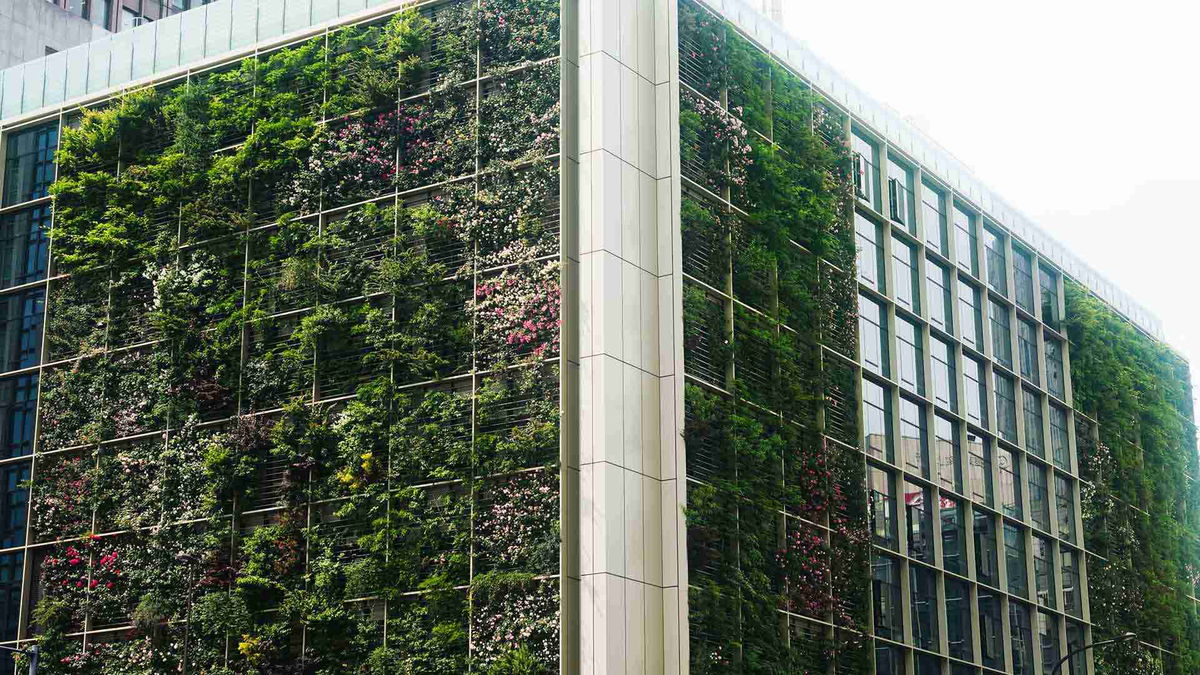Buildings have a pivotal role to play in the race to net-zero. The built environment – which includes the design, construction, and operation of structures, features, and facilities – is responsible for a quarter of the UK’s CO2 emissions. Most of these emissions come from the energy needed to heat, cool and power buildings, which is responsible for 19% of the UK’s carbon footprint.

We have some of the world’s oldest building stock here in the UK, and waiting for them to reach the end of their lifecycle to replace them with more energy-efficient buildings is not a sustainable option.
It’s predicted that 80% of the buildings that will be in use in 2050 already exist, continuing to emit CO2 as they age. Without an immediate and rapid push to retrofit and decarbonise existing buildings, net-zero targets will be missed.
Improving energy efficiency to drive down energy costs
The energy crisis has highlighted a strong business case for managing energy use and implementing sustainable practices. An office’s heating, ventilation, and air conditioning (HVAC) system can account for 40% or more of the total energy consumed. Hence, there is a significant financial incentive to act and find ways to drive down costs. Technologies such as LED lighting, insulation, electrification, and HVAC improvements can all lead to cost-effective decarbonisation in existing buildings.
We also need a longer-term review when investing in decarbonisation technology: the benefits of pursuing sustainability may not be immediate, but energy price fluctuations mean that the return on investment is greater, and the technology will pay for itself over shorter periods.
Challenges on the road to reducing emissions and meeting sustainability goals
But it is not plain sailing. Research by Schneider Electric highlights several obstacles that are stopping businesses from taking action. A poll of UK and Irish business leaders revealed that 82% believe the energy crisis will impact their ability to reach emissions reduction targets. Of this figure, 39% said they couldn’t obtain suitable products and solutions to decarbonise their buildings, 38% couldn’t find useful advice, and 19% lacked the skills to implement change.
Three key steps to decarbonisation
However, significant decarbonisation of existing buildings is achievable. There is no need for a silver bullet; there are existing technologies available today that help promote sustainable operations and save energy costs.
What’s needed is a three-step approach to retrofitting and reducing the carbon emissions of buildings: strategise, digitise, and decarbonise.
The first step, strategise, is important to define different levels of technological implementation, impact on emissions reductions, operational disruption in buildings. and time to reach ROI.
The next step focuses on digitisation and involves measuring and monitoring building energy and carbon with connected data to establish an emissions baseline and record reductions. For major retrofits, carbon tracking using building information modelling is also enabled.
The final step focuses on decarbonisation, using technology and solutions to reduce emissions. These include measuring and monitoring energy and carbon, introducing automation to reduce energy usage and emissions, purchasing off-site renewables, upgrading building systems and infrastructure, e.g. lighting system daylight optimisation, installing onsite renewables and microgrids, and tracking and limiting embodied carbon.
The energy used in the operation of existing buildings represents the most significant carbon impact from the built environment and, if the government is to meet its net-zero target by 2050, the retrofit of existing building stock must be a key priority. Then, businesses can reap sustainability benefits that will help future proof themselves against long-term energy market volatility. In this case, what is good for the planet is also good for the bottom line.
